On a recent (July 2008) trip to the south shore of Lake Superior (Upper Michigan peninsula),
I noticed that a lot of the fir trees there were dead. They were a bright orange-brown in color.
I searched for one that was about 5' tall and that was only half-dead, and snipped a
half-dead branch from it.
Upon returning home, I examined a cross-section of a 3/16" branch and examined it with a
400 power microscope. Pictures 2 through 6 show these microscope views.
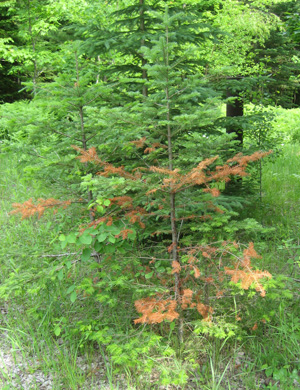
1
There are actually two fir trees here. Both are about the same size and both are half-dead.
Most of these fir trees are either totally green or totally orange-brown.
It's unusual to see a tree that is only partially dead, as these young trees are.
I can only assume that once these trees become infected, the infection spreads rapidly and kills the tree.
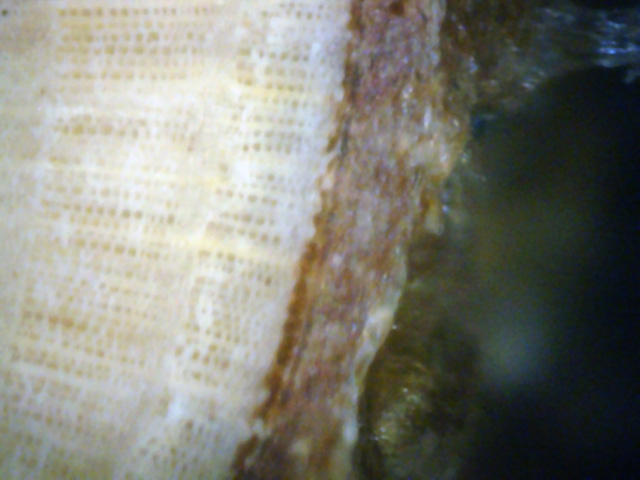
2
This picture shows normal, healthy tissue - evenly layered with a clean junction
between the xylem and phloem.
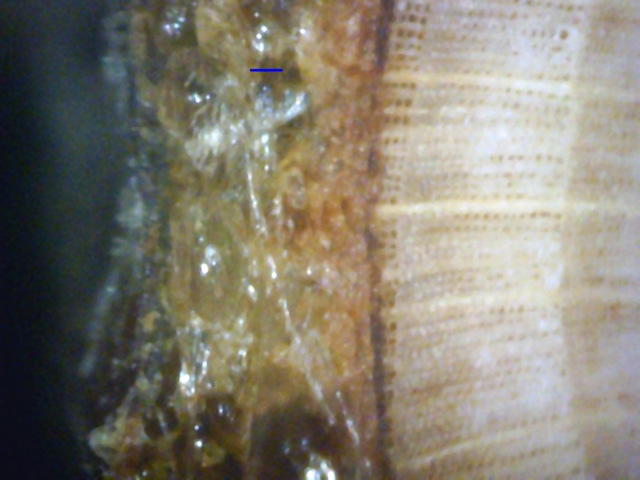
3
In contrast, the remainder of the bark around the twig was in far worse shape.
In this view, the xylem-phloem junction is still clean, but further out there appears
to be some hyphae infesting the bark.
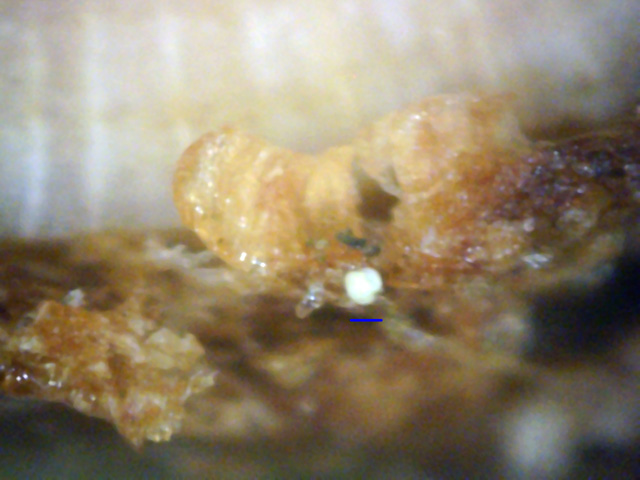
4
←
The segment of the cross-section shown above is so disturbed that it no longer even looks like bark.
Note the white spore near the large waxy blob (blue arrow).
A blue 50μm scale bar lies below the spore.
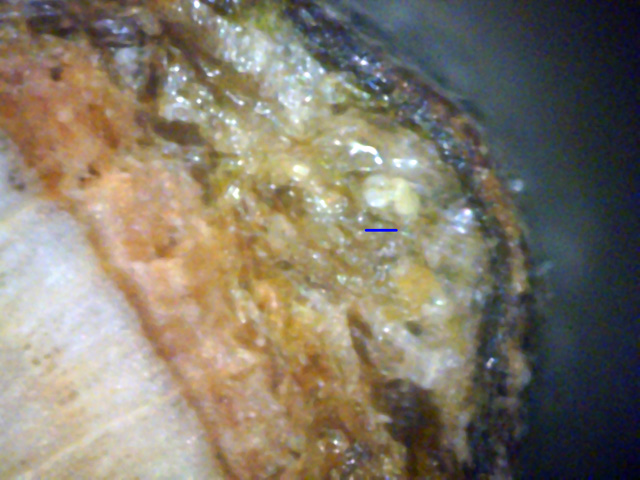
5
This picture shows strong evidence of white canker infection.
There is so much white canker growth at the phloem-cortex interface that the bark is bulging out.
And right in the center of this bulge are two buried white canker spores (just above the blue
50μm scale bar). Follow this bulge inward, toward the twig center, and you can see the
underlying phloem and xylem are tinged milk-white, a sign that they too are infested
with white canker. Surprisingly, this hasn't affected their structure.
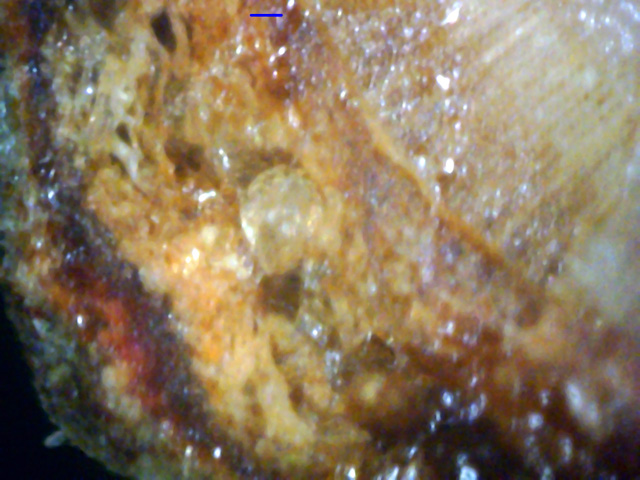
6
The white canker infection damage shown here is even larger than that shown in picture 5.
The normally green cortex has turned blood-red.
Underneath it, various shaped blobs of white canker are digesting and destroying the phloem,
leaving voids in the process.
The twig cross-section views shown above reflect the tree's health very well.
Some cross-section pictures show healthy tissue, while others show severe infection.
Pictures 5 and 6 are especially convincing evidence that this tree is dying due
a white canker infection. The lack of half-dead trees seems to indicate that once an infected
tree begins to show dead branches, death of the entire tree quickly follows. In fact, I
recall this happened locally about a year ago when a neighbor's 40' fir tree suddenly turned brown and
died within a week.